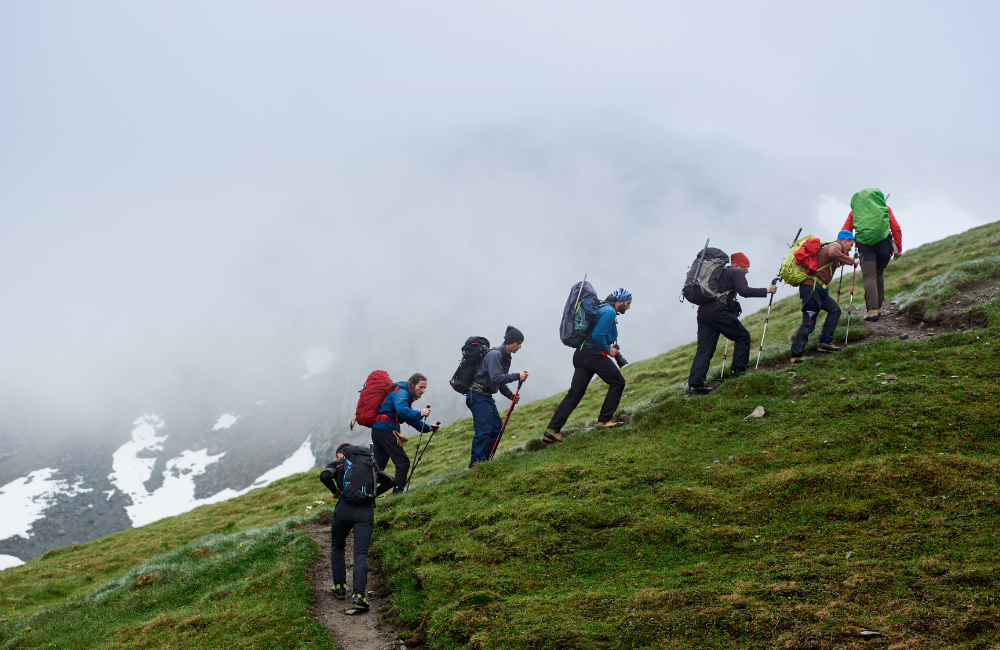Want to know what travel accident insurance is? You’re in the right place.
I’ve trekked glaciers, dodged traffic in Ho Chi Minh City, and once face‑planted off a rental scooter in Bali (helmet hair, totally worth it).
Each time, my safety net wasn’t a lucky charm but a travel accident insurance policy.
Unlike the “lost luggage and missed‑flight” sort of cover, this pays a hefty lump sum if I’m seriously hurt (or worse) while gallivanting abroad.
Let me explain what travel accident insurance is and why I never leave home without it.
Ready? Let’s roll.
Ready for unlimited adventure? Get travel insurance that covers over 150 activities and 190 destinations.
Travel Accident Insurance 101
Here’s my quick guide on everything you need to know about travel accident insurance.
What does it typically cover?
Travel accident insurance (also called holiday personal accident or AD&D cover) pays a fixed benefit (typically £25,000 – £500,000) when an accident on the road results in death, loss of limb, loss of sight or permanent disability.
Serious means serious; sprained ankles need not apply.
How does it differ from standard travel insurance?
Standard policies focus on medical bills, trip cancellation and baggage snafus. Accident cover is laser‑targeted at life‑changing events and often doubles as extra security alongside your regular policy.
Who actually needs travel accident insurance?
- Frequent flyers and business nomads who clock more air miles than a migrating goose.
- Families wanting a financial cushion if the unthinkable happens abroad.
- Adventure junkies ticking off high‑risk pursuits (hello, heli‑skiers).

How to Choose Travel Accident Insurance? (Step‑by‑Step)
Choosing the right travel accident insurance can feel overwhelming, especially when every policy seems designed to confuse. Here’s exactly how I break it down to avoid nasty surprises later.
1. Map Your Risk Profile
Start by thinking through the details of your trip and your personal situation.
I always create what I call a risk blueprint. First, look at your itinerary: Which countries are you visiting? Will you be travelling at high altitudes or spending time in remote areas?
Then consider what activities you plan to do, like trekking, diving, or hiring a motorbike.
Next, review your health. Make a list of any pre-existing conditions and medications you rely on, as these can affect both your premium and what claims will be paid.
Finally, be realistic about your financial buffer. If something catastrophic happened, how much money could you cover yourself before insurance kicks in?
Knowing this helps you set coverage limits that actually protect you.
Ready for unlimited adventure? Get travel insurance that covers over 150 activities and 190 destinations.
2. Decide What Coverage You Really Need
This is where many people guess and end up underinsured.
I always start by deciding how big an accidental death or disability payout I’d need to secure my family. A common rule is to cover at least five times your annual income or enough to clear your mortgage.
Personally, I aim for a minimum lump sum of around £250,000.
For medical evacuation, look for policies offering unlimited cover, air rescue and repatriation can cost hundreds of thousands.
If unlimited isn’t available, set your sights no lower than £5–6 million. It sounds excessive, but costs add up fast if you need intensive care abroad.
Lastly, don’t forget your trip duration.
Always add at least a week of buffer beyond your planned return date. Delays happen, volcano eruptions, airline strikes, or an unexpected detour can all extend your stay.

3. Build a Shortlist of Insurers
Once you’ve set your coverage targets, it’s time to find companies that can actually meet them. I usually check comparison sites as well as insurers’ own websites.
Some providers, like Rise & Shield, reserve their best policies for direct sales.
Be sure to check residency requirements. Many brands refuse to cover UK nationals who’ve been living abroad long-term.
If you’re a UK expat, look for specialist insurers who explicitly accept this status.
Ready for unlimited adventure? Get travel insurance that covers over 150 activities and 190 destinations.
4. Audit the Activities You Plan to Do
Never assume all your adventures are automatically covered. This is a classic mistake.
Download the full policy document (not just the summary), then search for each activity you care about. I use CTRL or CMD + F to find words like “trekking,” “scuba,” “motorbike,” and “mountaineering.”
Carefully read how these activities are defined. Some insurers cover trekking only up to a certain altitude, or motorbiking only if you’re fully licensed and wearing a helmet.
Highlight any exclusions or conditions in bright red so you won’t forget them later.

5. Stress-Test the Emergency Assistance
The true test of a travel insurance policy isn’t when you buy it, it’s at 3 a.m. when you’re stranded. So I always call the 24/7 emergency hotline before I commit. Even a one-minute chat tells you a lot about their responsiveness.
I usually ask something like: “If I needed an air evacuation from Nepal at 3 a.m. UK time, who would pick up this call?”
Pay attention to how quickly they answer and whether they sound professional and reassuring.
Ready for unlimited adventure? Get travel insurance that covers over 150 activities and 190 destinations.
6. Understand the Claims Process
The last thing you need during a crisis is an impossible claims procedure.
Before you buy, ask for a copy or link to the claims form. Read the instructions carefully; many policies require you to notify them within 24 to 48 hours after an incident.
Clarify exactly what evidence you’d need to submit, especially for serious claims like accidental death or permanent disability. This usually includes a hospital report, a police report, and sometimes a local death certification.

7. Confirm the Policy’s Flexibility
Plans can change. You might decide to stay abroad longer, try new activities, or even take out the policy after you’ve already left your home. Ask the insurer three crucial questions:
- Can you start the policy while already travelling, and is there a waiting period?
- If your trip overruns, can you extend your cover online without returning home?
- Can you upgrade your policy to cover extra sports or activities partway through?
If the answer to any of these is no, think carefully about whether that rigidity could cause you problems later.
Ready for unlimited adventure? Get travel insurance that covers over 150 activities and 190 destinations.
8. Scrutinise Exclusions and Excesses
Some exclusions are common sense, but others can catch you out.
Check carefully for alcohol limits; many insurers won’t pay if your blood alcohol concentration exceeds 0.19%.
Look for any helmet, license, or certification requirements for riding motorbikes, diving, or other riskier pursuits. Also, study the list of countries or regions excluded due to war, terrorism, or civil unrest.

9. Finalise Your Policy and Organise Your Documents
When you’ve ticked all the boxes, buy the policy and take a few minutes to get organised.
Save a digital copy of your policy on your phone and tablet. Print a wallet card with your policy number and emergency hotline details.
Finally, add a calendar reminder for one month before the policy expires, so you have time to renew or switch providers without a gap in coverage.
And that’s how I get travel accident insurance.
Travel Accident Insurance FAQs (What You Really Should Know)
Got some questions? Here are some burning, frequently asked questions about travel accident insurance I always get asked:
1. What does travel accident insurance cover?
It typically covers accidental death, permanent disability, and sometimes serious injuries while travelling. Policies often include medical evacuation and repatriation costs as well.
2. Is travel accident insurance the same as travel medical insurance?
No. Travel medical insurance covers illness and routine care abroad, while travel accident insurance specifically covers injuries or death from accidents.
3. Do I need travel accident insurance if I already have life insurance?
Possibly. Your existing life cover might not include accidents overseas, emergency evacuation, or repatriation costs, so it’s worth checking the details.
4. Can I buy travel accident insurance after I’ve already started my trip?
Some insurers, like Rise & Shield, allow it, but there may be waiting periods before cover begins. Always confirm before you buy.
5. Does alcohol or risky behaviour void my travel accident insurance?
Often, yes. Most policies exclude claims if you were under the influence of alcohol beyond a set limit or engaging in reckless activities without proper precautions.
Ready for unlimited adventure? Get travel insurance that covers over 150 activities and 190 destinations.
My Final Thoughts
And there you have it: Travel accident insurance is the parachute I pray never to deploy, but I’d sooner fly carry‑on only than skip it.
For a modest premium, it turns life‑altering chaos into financial certainty, letting me (and Cathy back home) breathe easier. Pack it, then go chase the view from that next mountain pass.
